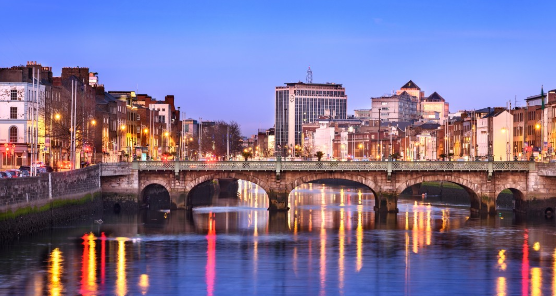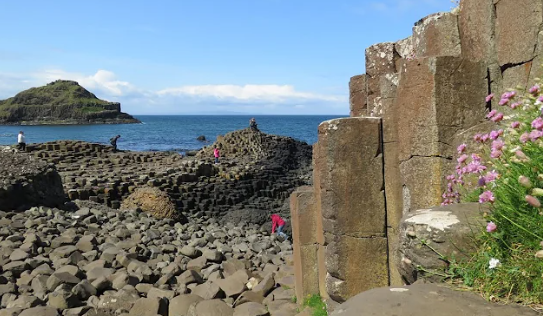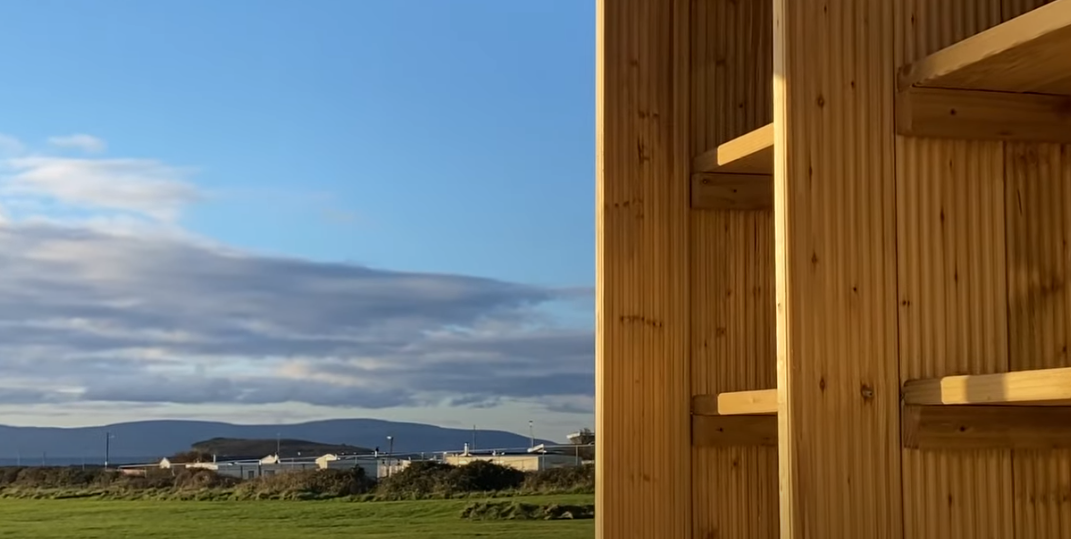When planning a trip to Ireland, knowing what to wear can make all the difference in ensuring a comfortable and enjoyable experience. Ireland's weather is famously unpredictable, often bringing sun, rain, and wind all in one day. The key is to focus on layers, waterproof clothing, and sturdy footwear.
From my own experiences traveling through Ireland, I've found that being prepared for all weather conditions is crucial. A waterproof jacket and a good pair of walking shoes were lifesavers on day trips. Remember, the right clothes can make or break your trip to this beautiful country!
What To Wear in Ireland During Summer?
In deciding what to wear in Ireland during summer, it's key to remember the country's mild yet changeable climate. Despite the temperatures drop the summer months often being warmer, the weather can still be unpredictable with occasional rain and breezy conditions. On my last trip, I found layering to be incredibly useful, as the mornings could start cool and afternoons might warm up significantly
Here are a few essentials you should consider packing for Ireland during summer:
-
Lightweight waterproof jacket: This is a must, as rain showers can come and go quickly. I always keep one handy in my daypack.
-
Breathable tops and t-shirts: Opt for materials like cotton or moisture-wicking fabrics that can handle both the warmth and occasional dampness.
-
Comfortable walking shoes: Whether you're exploring bustling cities like Dublin or the rugged coastlines, good walking shoes are crucial. I prefer ones that are also water-resistant.
-
A mix of jeans and shorts: While shorts are perfect for sunny days, jeans can be ideal for cooler evenings. During my evenings out in Galway, jeans were just right.
-
A versatile sweater or cardigan: Evenings can be cool, and a cozy layer is perfect for those times. It also came in handy in some air-conditioned public places.
Each of these items helped me enjoy Ireland's beautiful landscapes and vibrant cities comfortably, blending preparedness and travel insurance with a touch of personal style.
What To Wear in Ireland in Winter?
In winter, knowing what to wear in Ireland is essential, given the country's cool and frequently rainy weather. During my numerous trips, I've found that being unprepared can lead to a lot of discomfort—like that time I roamed the cobbled cobblestone streets of Dublin clad only in a thin jacket, shivering as the cold wind pierced through. I quickly realized the importance of smart packing. In Ireland, layering isn't just a fashion statement; it's a survival strategy, allowing for adjustments to the unpredictable weather.
Before you set off for Ireland in the winter, it's vital to prepare for both the cold and the potential for wet conditions. Here's a list of essentials that should make their way into your suitcase:
-
A waterproof, windproof jacket: Absolutely essential. It shields you from the relentless wind and rain, which I learned the hard way during a blustery ferry ride to the Aran Islands.
-
Thermal layers: Begin with a base layer that wicks away moisture, then add a thermal mid-layer, like a fleece or wool sweater, for insulation. Layering effectively helped me maintain a comfortable body temperature whether I was indoors enjoying a local play or outside admiring the Cliffs of Moher.
-
Waterproof, durable boots: Suitable for both city walks and rural trails. They keep your feet dry and warm, which is a blessing when you spend hours exploring.
-
Warm accessories: A hat, scarf, and gloves are non-negotiables. I always pack extras just in case one set gets wet.
From personal experience, these items are not just suggestions for packing list but necessities if you want to enjoy the beauty of Ireland's winter landscape comfortably. Whether you're taking in the historical sights of Dublin or enjoying the rugged scenery of the west coast, staying warm and dry is key to a pleasant journey.
What To Wear in Ireland: A Month-Wise Guide from January to December
Dressing for Ireland month by month means preparing for its famously unpredictable weather. During my trips, I've realized the importance of layering, as you might encounter a chilly morning that unexpectedly warms by midday. A waterproof jacket is vital for the frequent showers, and sturdy walking shoes are a must for traversing the beautiful, rugged terrain. Don’t forget a cozy hat and scarf, especially useful from the windy peaks of January to the crisp evenings in December. With this guide, you'll be well-equipped to experience Ireland comfortably, no matter the season.
January
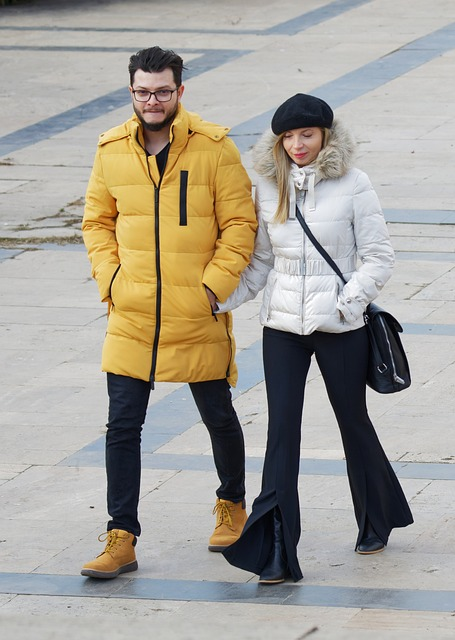
In January, the Irish climate is typically cold and damp, with average temperatures ranging around 5°C. To stay warm and comfortable, I always opt for layered clothing, starting with thermal underwear followed by a fleece or wool sweater. Over these, a waterproof and windproof jacket is essential. From my own trips, I've learned that accessories like a warm knitted hat, insulated gloves, and a thick scarf are indispensable for dealing with the chilly winds.
Footwear is another crucial consideration during this time of the all year round. I always make sure to wear waterproof boots with a good grip to navigate the often slippery streets and trails. An extra pair of wool socks also goes a long way in keeping your feet warm during long walks. Lastly, I never forget to carry an umbrella; Irish weather can switch from clear skies to rain quite suddenly, and it’s always best to be prepared.
February
In February, deciding what to wear in Ireland means preparing for cold and wet weather. My go-to outfit starts with a waterproof jacket because sudden showers are quite frequent. Layering is essential; I begin with a thermal undershirt, add a warm woolen sweater, and sometimes include a fleece for extra insulation. Waterproof boots are indispensable for handling the often-soggy terrain. From my own trips, I've learned that a sturdy pair of boots can make a huge difference in comfort while exploring. Additionally, I never leave without a warm hat and gloves— the Irish winds can be piercing, and these accessories are crucial for staying comfortable. Scarves also come in handy, offering both warmth and a splash of style to your outfit. Remember, the key is to stay dry and warm while enjoying the breathtaking Irish landscapes, even in the cooler months.
March
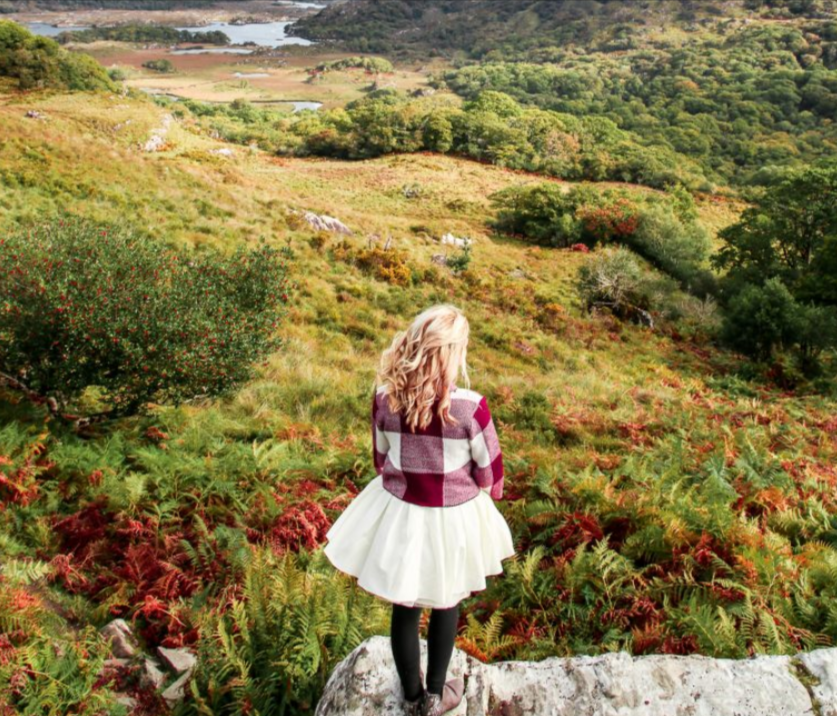
March month often greets visitors with brisk temperatures and frequent showers, so layering is essential. I always start with a thermal base layer and add a warm sweater or fleece, which has proven perfect for the cool days. A waterproof rain jacket is indispensable; during my last visit, it shielded me from unexpected rain while exploring the lush landscapes of Connemara.
For footwear, waterproof boots are a must, especially if you plan to enjoy the scenic walks or rural excursions Ireland is famous for. On my walks through the Irish countryside, sturdy boots kept my feet dry and comfortable over wet terrain. Don't forget a hat and gloves; they provide that extra comfort against the March chill, making my strolls through the winding streets of Dublin much more enjoyable. Lastly, carry an umbrella; it's a simple addition that can make your day-to-day adventures in Ireland more pleasant.
April
In April, Ireland's weather often showcases early spring's mild temperatures with occasional showers. For my trips during this month, I typically only pack light layers that I can easily adjust. A waterproof jacket is essential, as April showers are frequent and can come unexpectedly. I also include a comfortable pair of waterproof boots, ideal for walking through Ireland’s lush landscapes that begin to bloom beautifully at this time. During my last visit, I found a light scarf and a warm sweater perfect for the evenings, when the temperatures can still dip. Woolen accessories not only keep you warm but also fit right into the local style.
May
In May, what to wear in Ireland depends on the typical spring weather which can be quite variable. During my last visit in May, I found layering to be the key. I typically started with a breathable base layer, often a long-sleeve tee, as mornings can be cool. Over this, a fleece or lightweight wool sweater provided extra warmth, especially when the sun dipped behind clouds or in the evenings.
A waterproof jacket was indispensable during sudden showers, and I always kept one handy. Comfortable walking shoes with good grip are essential for exploring the lush, sometimes wet landscapes. Don't forget a hat and sunglasses; when the full sun rises and shines in Ireland, it is absolutely glorious and can be quite strong.
June
In June, the weather in Ireland typically shifts towards milder temperatures, ranging from 10°C to 18°C (50°F to 64°F). Days begin to warm up, but the climate remains unpredictable with occasional rain showers and brisk winds. Given these conditions, it's wise to dress in versatile layers.
Start with breathable T-shirts and long-sleeve shirts that can be layered under a light sweater or cardigan. Since rain is still a possibility, include a waterproof jacket or a sturdy raincoat in your wardrobe. Packing both light trousers and shorts gives you flexibility for both cooler and warmer days.
Comfortable, water-resistant walking shoes are essential for navigating both urban and rural terrains, especially with Ireland's frequent drizzles. An umbrella is a must-have to stay dry during unexpected showers.
For sunnier days, which are more common in June compared to earlier months, a brimmed hat and UV-protection sunglasses are advisable to carry on to guard against the sun's rays. This combination of clothing and accessories will ensure you are prepared for Ireland’s dynamic June weather.
July
July generally brings some of Ireland's warmest weather, with temperatures averaging between 14°C and 20°C. Light clothing is advisable, such as short-sleeved shirts and pants or skirts. Despite the warmth, Ireland's climate remains unpredictable, so always include a waterproof jacket or a light raincoat in your attire. Opt for comfortable walking shoes as you explore, whether in cities or trekking through the lush countryside. Don't forget a hat and sunglasses to shield against the sometimes bright, sunny days.
August
In August, Ireland typically enjoys some of its best weather, with mild temperatures averaging between 14°C to 20°C. This month is considered one of the warmest and generally features a mix of sun and rain. Visitors should pack a variety of clothing options to accommodate this variability.
Light, breathable fabrics like cotton are ideal for daytime activities, as they keep you comfortable during sunny spells. T-shirts, long or short sleeve, shirts, and jeans or khakis make for practical choices. Despite the generally pleasant weather, Ireland's climate can be unpredictable, so carrying a lightweight waterproof jacket or a compact umbrella is advisable to stay prepared for sudden showers.
For footwear, opt for comfortable walking shoes or sneakers, as they are suitable for both city walks and rural excursions. Sandals can be comfortable shoes worn on warmer days, but it's wise to have more protective options available.
Evenings in Ireland can get cool, especially in coastal areas where breezes are common. Including a warm sweater or a fleece in your luggage will ensure you stay cozy while enjoying outdoor dining or coastal walks under the starry skies. Also, consider a light scarf and a hat to protect against the wind.
September
In September in Ireland, the weather typically transitions from summer warmth to the cooler, more variable conditions of autumn. Temperatures usually range between 12°C and 17°C. You can expect a mix of sunny days and occasional rain showers, so it’s wise to prepare for both.
Dressing in layers is ideal for this time of year. Start with a breathable base layer and add a warm sweater or fleece. Always include a waterproof jacket to handle sudden rain. Comfortable, water-resistant footwear is essential for exploring, whether you’re in the city or venturing into the countryside.
October
In October in Ireland, expect mild to cool temperatures and frequent showers. Average temperatures range from 8°C to 14°C (46°F to 57°F). Pack layers including a warm sweater, a waterproof jacket, and long pants to stay comfortable.
Opt for waterproof footwear as rain is common during this month. Don’t forget accessories like a warm hat and gloves for chillier days, especially in the evenings or if you plan to explore the coastal regions where winds can be brisk.
November
In November, dressing for the Irish weather means preparing for cool temperatures and frequent rain. Expect daytime highs around 10°C (50°F) and nighttime lows dipping to 5°C (41°F). Waterproof outerwear, such as rain jackets or water-resistant coats, is essential. Layering is also key; include sweaters or fleece jackets that can be easily added or removed as the temperature changes.
Footwear should be sturdy and waterproof, as November is one of the wetter months. A good pair of waterproof boots will keep your feet dry and warm. Don’t forget accessories like warm hats, scarves, and gloves to protect against the chill and damp Irish air. Light wool or thermal fabrics work well for keeping cozy without the bulk.
December
In December, dressing warmly is essential for a trip to Ireland, as temperatures typically range from 3°C to 7°C. Expect frequent showers and cold winds, so waterproof and insulated clothing should be a priority. Layering is key, so pack thermal underwear, woolen sweaters, and a heavy, waterproof coat.
Accessorize with scarves, gloves, and a warm hat to stay comfortable. Sturdy, waterproof boots are also recommended to navigate the wet and often slippery streets. Despite the chill, the natural beauty of Ireland in winter can be quite charming, making these preparations well worth it.
What To Wear for Hiking in Ireland
When planning your hiking attire in Ireland, it's essential to prepare for varied weather conditions. The Irish climate can be unpredictable, often featuring warm weather, but also with possibilities of rain, wind, and occasional sunshine all in one day. Layering is key to adapt quickly and remain comfortable throughout your hike. Starting with a moisture-wicking base layer will keep you dry by drawing sweat away from your body. Including a long sleeved shirt as a part of your middle layer can provide both insulation and protection from the sun. This can be complemented with a fleece or light down jacket, and a waterproof outer layer protects against rain and wind. Durable, waterproof hiking shoes and boots are crucial for navigating the often muddy and uneven terrain. Remember, the goal is to stay dry, warm, and comfortable as you explore the lush and rugged landscapes of Ireland.
-
Waterproof Jacket: A necessity given Ireland's frequent rainfall and brisk winds. Choose a breathable, waterproof jacket that doesn't just keep you dry but also prevents overheating during physical exertion.
-
Breathable Base Layer: This layer is crucial as it sits directly against your skin. Opt for materials like merino wool or synthetic fibers that wick moisture away, keeping you dry and comfortable throughout your hike.
-
Insulating Middle Layer: An insulating layer traps body heat to keep you warm. Fleece or lightweight down jackets are perfect as they are warm yet highly compressible, making them easy to pack or remove as temperatures change.
-
Waterproof Hiking Boots: Essential for dealing with Ireland’s wet, boggy trails. Look for boots with a sturdy grip to prevent slipping and a waterproof membrane to keep your feet dry.
-
Hiking Trousers: Select trousers that are not only waterproof but also breathable and quick-drying. These features help manage the rain and mud while maintaining comfort.
-
Warm Hat and Gloves: These are especially crucial during the colder months or in higher elevations where temperatures can drop significantly. A warm hat and a pair of gloves can make a considerable difference in your overall body temperature.
-
Backpack with Rain Cover: Protect your gear from the rain with a good quality backpack equipped with a rain cover. This is particularly important for longer treks where you need to carry food, water, and possibly extra clothing.
What To Wear for Golfing in Ireland
When planning your golfing attire for a trip to Ireland, it's essential to consider the country's unpredictable weather. The climate can rapidly change from sun to rain, making versatility key in your clothing choices. For those visiting Ireland, packing an Ireland packing list that includes a light jacket, warm clothes, and a long-sleeved shirt is advisable, as summer temperatures can still be cool. Golf courses in Ireland, renowned for their beautiful but often windy and wet conditions, require gear that not only respects the traditions of the sport but also shields you from the elements. A smart approach is to dress in layers, which allows for quick adjustments based on the weather, and choosing fabrics that provide warmth and moisture resistance will enhance your comfort and performance on the course.
-
Waterproof Golf Shoes: It is vital to wear shoes with a waterproof guarantee. Irish golf courses are often wet, and water-resistant footwear will keep your feet dry and ensure stability and traction on slippery terrain. Look for shoes that offer both comfort and durability to handle the rugged courses.
-
Windbreaker: A high-quality, lightweight windbreaker that is also waterproof is indispensable for golfing in Ireland. This piece of attire will shield you from the persistent and sometimes harsh Irish winds. Ensure it’s breathable to prevent overheating, especially during a strenuous round.
-
Moisture-wicking Polo Shirt: A polo shirt made from moisture-wicking fabric is essential for handling the sporadic rains and occasional sunshine. This material helps pull moisture away from the skin, keeping you dry and comfortable throughout the game, thus maintaining focus and performance.
-
Golf Trousers: Opt for weather-resistant golf trousers instead of shorts. Trousers will protect against cool winds and unexpected rain showers, and are typically designed to offer flexibility and comfort during swings. Choosing trousers in a breathable fabric ensures comfort without sacrificing protection.
-
Thermal Vest: Incorporating a thermal vest to layer underneath your polo can be a game-changer on cooler days. It provides additional insulation while remaining lightweight enough to not hinder your golf swing. This layer is particularly beneficial during early morning starts or late evening rounds when the temperature tends to drop.
-
Hat and Sunglasses: A waterproof hat or cap is crucial for keeping the rain out of your eyes, while sunglasses can protect against UV rays when the sun emerges. Both items contribute to maintaining good visibility and concentration during play, with sunglasses also helping to reduce glare from wet surfaces.
What Colors Not To Wear in Ireland
When planning your attire for a trip to Ireland, it's essential to consider the local customs and practical elements of your wardrobe. The Irish landscape is famously lush and frequently photographed, so wearing overly bright or neon colors might clash with the natural environment, especially in rural or scenic areas. Additionally, Ireland is a place with a strong sense of tradition and community. Wearing colors that are too flashy can be perceived as disruptive in smaller communities or local gatherings.
-
Bright Green: Avoid wearing bright, neon green as it can be seen as kitschy, especially around cultural landmarks or during St. Patrick's Day, when subtler shades are more respectful and tastefully blend in.
-
Orange: This color has political connotations in Ireland, associated with the Orange Order. Wearing it could be sensitive, particularly in Northern Ireland and on significant dates like the Twelfth of July.
-
All-Black: While common in fashion, all-black outfits are traditionally reserved for mourning in Ireland and might be misinterpreted in social settings.
FAQs On What to Wear in Ireland
1. Is it necessary to pack rain gear for a trip to Ireland?
Yes, packing rain gear is essential for Ireland's unpredictable weather patterns. Waterproof jackets and sturdy umbrellas are recommended to stay dry during sudden showers.
2. What type of footwear is suitable for exploring Ireland's landscapes?
Opt for waterproof and sturdy footwear, such as hiking boots or wellies, to navigate Ireland's rugged terrain comfortably and keep your feet dry.
3. Are layers necessary for clothing in Ireland?
Yes, layering is advisable to adjust to Ireland's fluctuating temperatures throughout the day. Pack items like sweaters, cardigans, and lightweight jackets for versatility.
4. Can I wear jeans in Ireland?
Jeans are perfectly acceptable attire for outdoor activities in Ireland, especially when paired with layers and weather-appropriate outerwear for comfort and style.
5. Are hats necessary for protection against Ireland's weather?
Hats, particularly waterproof or woolen ones, can provide added protection against Ireland's wind and rain, ensuring you stay warm and dry during your explorations.
6. Is it advisable to bring sunscreen to Ireland?
Yes, sunscreen is recommended, especially during sunny spells, to protect your skin from Ireland's UV rays, despite the prevalent misconception about its cloudy weather.

